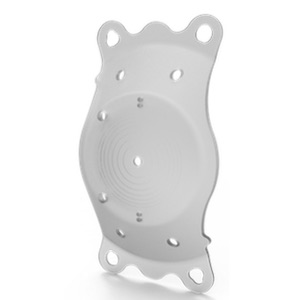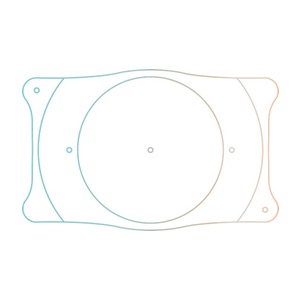Phakic lenses or implantable contact lenses are made from a very soft material, for example from collagen, and are well-tolerated. There are some advantages to these types of lenses: The former ametropia recurs in extremely rare cases only (recurrence), and accordingly, the patients’ satisfaction is great. There is no corneal tissue removed, and the lens can be removed at any time – for these reasons, it is preferred over laser treatment by many patients by now. Primarily, collagen lenses are placed in younger patients having severe myopia or hyperopia and needing lenses with high diopter values. If astigmatism is present at the same time, it can be compensated for with a toric contact lens.
Implantable contact lenses correct myopia, hyperopia or astigmatism and presbyopia
Implantation of contact lenses in the eye is an interesting option for people such as Arpine S.: Eye laser surgery was not possible due to her prescription, and she was no longer able to wear contact lenses. Implantable contact lenses are implanted in the eye in addition to the natural lens and correct the eye’s focal point, thus correcting myopia, hyperopia and astigmatism. A new lens, the IPCL, is also available with a multifocal optic to treat presbyopia.
An implantable contact lens like the new EVO+ Visian ICLTM can even significantly improve quality of vision. Contrary to the previous model ICL, it has an extended optic zone which can be an advantage for younger people in particular. Due to its results and because it can be removed at any time, many patients prefer a collagen lens over laser treatment. Good to know: Dr. Breyer has been implanting the ICL for more than 15 years and is shaping the standard for surgical technology, preliminary and follow-up examinations for implantation of collagen lenses as one of the five experts of the ICL study group heading the ICL congress.
Advantages of phakic lenses
The invisible posterior chamber lens EVO+ Visian ICLTM made from Collamer®
There are two types of implantable contact lenses: Anterior chamber lenses and posterior chamber lenses. A great advantage of posterior chamber lenses is that they are not visible to other people. In addition, they do not have to be fixed in place but can just be placed in the posterior chamber.
It is not only us who have had great experiences with VisianICLTM. This ICL family has been well-regarded for more than 20 years. World-wide, more than 550,000 lenses have been implanted. A study by the US Food & Drug Administration also proves that more than 97% of the patients which had a Visian ICL implanted are happy with this lens. In addition, the ICL has been successfully implanted in US army soldiers more than 3,000 times since 2006 and has proved itself under the most extreme circumstances. It is ideal for younger people wishing to have the best quality of vision without glasses or contact lenses, for example because they are exercising a lot and contact lenses or glasses are frequently bothersome during that.
The new EVO Visian ICL
Are you between 21 and 45 years old? The EVO Visian ICL might be an interesting alternative to eye laser surgery for you, not only if you have a higher prescription. This reversible correction of your ametropia offers excellent quality of vision with an expanded optical zone – without a loss of corneal tissue. Incidentally, Dr. Breyer is one of the pioneers in this field and is implanting the EVO Visian ICLTM with a minimally invasive incision of 2.2 mm – that is, as gentle as possible.
The IPCL – also available as multifocal lens for presbyopic patients

This new 'Implantable phakic contact lens' (IPCL), is also placed behind the iris, in front of your natural crystalline lens. It corrects not only myopia or hyperopia, but also presbyopia. It is available in a wide power range and with a multifocal optic. Therefore it is suitable for presbyopic patients between the age of 45 and 55 who want to achieve spectacle independence while retaining their own natural crystalline lens.
The IPCL is made from reinforced hybrid acrylic material which is highly biocompatible and ensures excellent long term performance. This lens is customized according to the shape and size of the individual eye. Good to know: The procedure is reversable in case that you need cataract surgery later in life.






